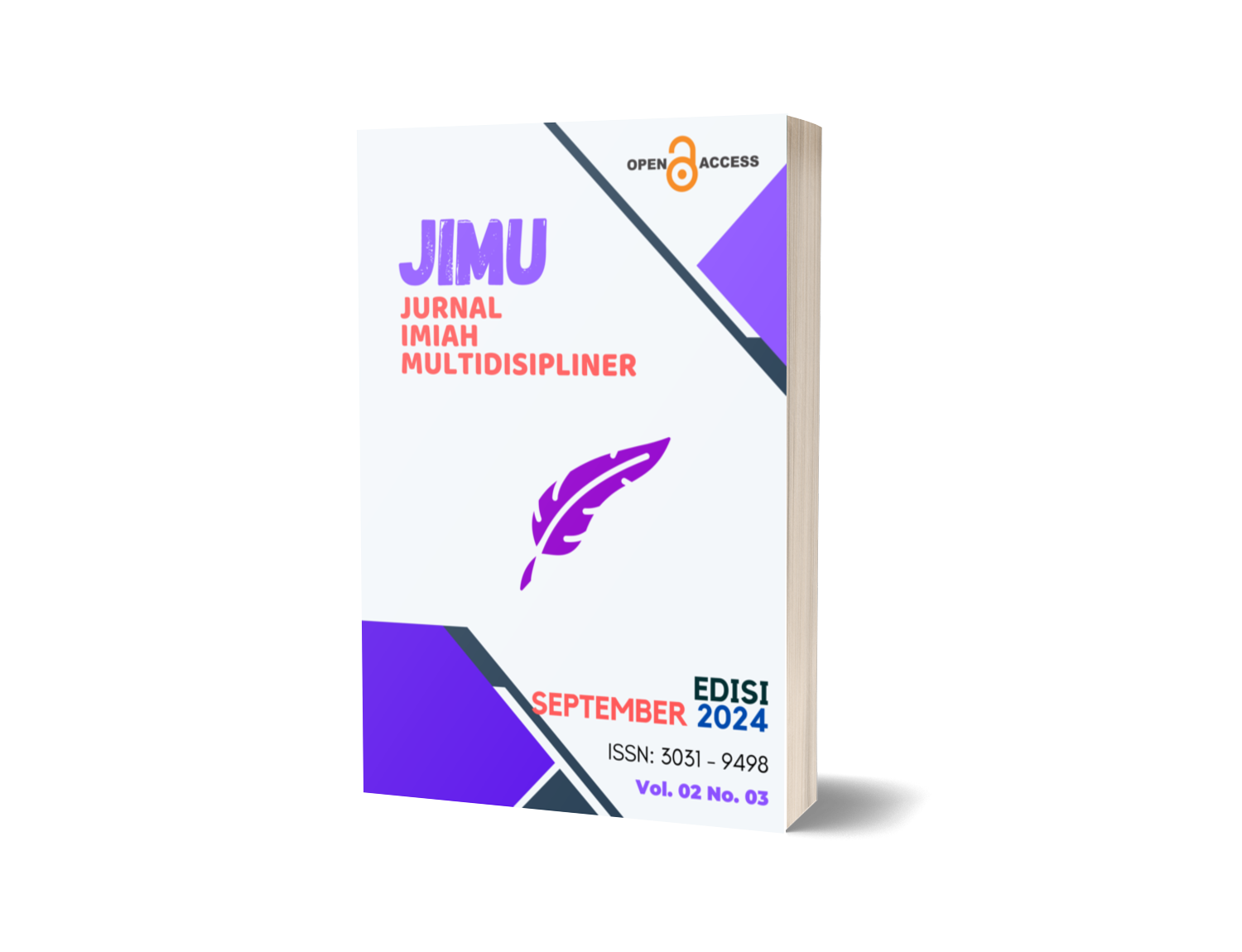Sistem Monitoring Kehadiran Mahasiswa Berbasis IoT
Kata Kunci:
RFID, Internet of Things, Attendance Monitoring SystemAbstrak
Conventional student attendance monitoring systems often face problems such as data inaccuracy and delays in attendance information. This study aims to develop an efficient and real-time RFID and Internet of Things (IoT)-based student attendance monitoring system. The methods used include hardware design using the RC522 RFID module and ESP32 microcontroller, web-based software development, and implementing WhatsApp notifications using the API. The trial results show that the system successfully integrates RFID and IoT technology with a tag reading accuracy level at an optimal distance of 1-5 cm. The system is able to send real-time notifications to parents' WhatsApp with a success rate of around 80% and an average response time of 1.2 seconds from RFID reading to recording in the database. The developed web interface obtained a System Usability Scale (SUS) score of 82.5, indicating a good level of usability. The developed system offers an effective solution to improve the accuracy and efficiency of student attendance monitoring, as well as increasing transparency between educational institutions and parents.
Unduhan
Referensi
Nurfiana, putri, Darmajaya, I. B. I. (2015). Implementation of Rfid ( Radio Frequency Identification ) for Student Attendance System, (August), 190–194.
Dedy Irawan, J., Adriantantri, E., & Farid, A. (2018). RFID and IOT for Attendance Monitoring System. In MATEC Web of Conferences (Vol. 164). EDP Sciences. https://doi.org/10.1051/matecconf/201816401020
Muharromi, U., Wayan, I., Arimbawa, A., Putu, G., & Wedashwara, W. (n.d.). Rancang Bangun Sistem Pelaporan Presensi Siswa Menggunakan RFID Dan Aplikasi Telegram Berbasis Internet Of Things Pada SMP Negeri 21 Mataram (Design System Reporting Presence Student Using RFID and Telegram Applications Based Internet of Things in SMP Negeri 21 Mataram).
Sambodo, P. S., & Assegaff, S. (2020). Analisis Dan Perancangan Sistem Absensi Berbasis RFID Pada Majelis Tafsir Al- Qur ’ an ( MTA ) Perwakilan Kota Jambi. Jurnal MANAJEMEN SISTEM INFORMASI, 5(2), 164–176.
Setiawan, E. B., & Kurniawan, B. (2015). Perancangan Sistem Absensi Kehadiran Perkuliahan dengan Menggunakan Radio Frequency Identification (RFId). Jurnal CoreIT (Vol. 1).
Setyawati, M. G., & Darmawan, A. (2019). Rancang Bangun Kunci Loker Masjid. Seminar Nasional Hasil Penelitian Dan Pengabdian 2019, 399–405.
Sudibyo et al., 2020 Juniasyah, D., Komputer, S., Sudibyo, N. H., Komputer, S., Muktiawan, D. A., & Komputer, S. (n.d.). Design of A Laboratory Assistant Presence System.
Sudibyo, N. H., Nugroho, B., & Bastari, I. K. (2020). Rancang Bangun Sistem Informasi Ketersediaan Lokasi Parkir Sepeda Motor. Jurnal Sistem Informasi & Manajemen Basis Data (SIMADA) , 3(1), 60–67.
Afianti, D. (2022). Literatur Review: Keterlibatan Orang Tua dalam Penggunaan Teknologi Digital untuk Pendidikan Anak. 1–10.
Cohen, L., Manion, L., & Morrison, K. (2000). Research Methods in Education. Http://Lst-Iiep.Iiep-Unesco.Org/Cgi-Bin/Wwwi32.Exe/[In=epidoc1.in]/?T2000=011160/(100).
Dinasari, W., Budiman, A., & Megawaty, D. A. (2020). Sistem Informasi Manajemen Absensi Guru Berbasis Mobile (Studi Kasus : Sd Negeri 3 Tangkit Serdang). Jurnal Teknologi Dan Sistem Informasi, 1(2), 50–57. https://doi.org/10.33365/jtsi.v1i2.558
Ekowati, M. A. S., Nindyatama, Z. P., Wening, S., & Dananti, K. (2023). Pengembangan Sistem Kelas Cerdas Berbasis Internet of Things (IoT) untuk Proses Pembelajaran Tingkat SMP di Kota Surakarta. JITU : Journal Informatic Technology And Communication, 7(1), 20–33. https://doi.org/10.36596/jitu.v7i1.1015
Hardiyanto, A., Fitriandra, B., & Hastuti, T. (2023). Sistem Informasi Absensi Siswa Berbasis Web (Studi Kasus Pada SMK Kesehatan Nasional Surakarta). Jurnal INFORMA Politeknik Indonesia Surakarta, 9(2), 2–7.
Ila Irnawati, Dyah Darma Andayani, & Muh. Yusuf Mappeasse. (2022). Pengembangan Sistem Informasi Monitoring Siswa Berbasis Web dan SMS Gateway di SMP Negeri 2 Mimika. Information Technology Education Journal, 1(1), 66–74. https://doi.org/10.59562/intec.v1i1.216
Judijanto, L., Hiswara, A., Aini, M. A., & Nanjar, A. (2024). Pengaruh Implementasi Internet of Things Terhadap Pengambilan Keputusan Bisnis Pada Perusahaan Teknologi di Jakarta. Jurnal Multidisiplin West Science, 3(03), 389–397. https://doi.org/10.58812/jmws.v3i03.1075
Lamada, M., Miru, A., & Amalia, R. (2020). Pengujian Aplikasi Sistem Monitoring Perkuliahan Menggunakan Standar ISO 25010. Jurnal MediaTIK, 3. https://doi.org/10.26858/jmtik.v3i3.15172
M. Apriannur, Nugrahadi, D. T., Farmadi, A., Mazdadi, M. I., & Indriani, F. (2023). Implementasi Algoritma Enkripsi AES-128 bit pada Data RFID pada Jarngan 802.11n dan 802.11ac dengan Monitoring Jarak Jauh Berbasis MQTT. Jurnal Informatika Polinema, 10(1), 85–92. https://doi.org/10.33795/jip.v10i1.1494
Pramesti, S., & Tri Febrianto, P. (2024). Implementasi Sistem Absensi Digital Untuk Meningkatkan Efisiensi Pencatatan Kehadiran Guru Di Sekolah Dasar. JATI (Jurnal Mahasiswa Teknik Informatika), 8(2), 2429–2434. https://doi.org/10.36040/jati.v8i2.9521
Stefanus, M., & Fernandes Andry, J. (2020). Pengembangan Aplikasi E-learning Berbasis Web Menggunakan Model Waterfall Pada SMK Strada 2 Jakarta. Jurnal Fasilkom, 10(1), 1–10. https://doi.org/10.37859/jf.v10i1.1878
Wahid, A. A. (2020). Analisis Metode Waterfall Untuk Pengembangan Sistem Informasi. Jurnal Ilmu-Ilmu Informatika Dan Manajemen STMIK, November, 1–5.
Yuliadi, Y., Zaen, M. T. A., Sofya, N. D., & Sonia, S. (2022). Rekayasa Sistem Informasi Absensi Siswa Sekolah Berbasis Internet. Journal of Information System Research (JOSH), 3(4), 636–643. https://doi.org/10.47065/josh.v3i3.1522









